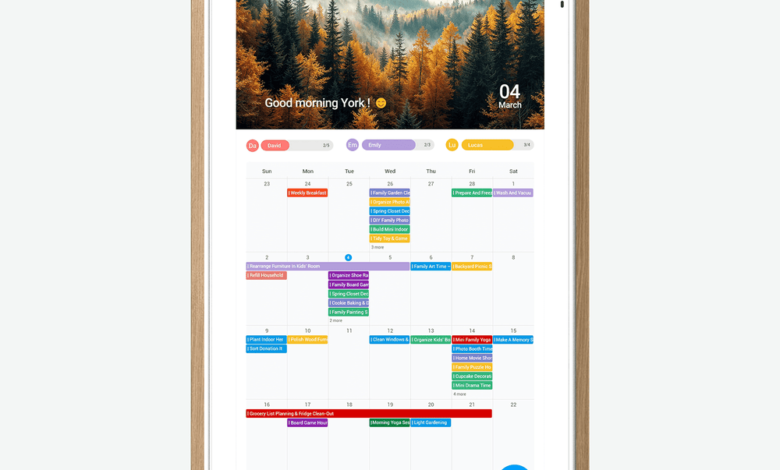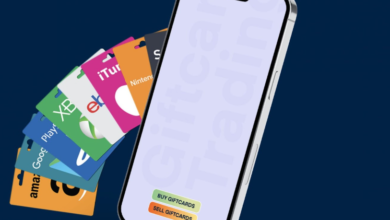Transform Family Scheduling with the Ultimate Digital Calendar

Managing a busy family’s schedule can feel like juggling flaming torches while riding a unicycle. Between school activities, work commitments, medical appointments, sports practices, and social events, keeping everyone on the same page becomes a daily challenge. Missed appointments, double-booked evenings, and forgotten commitments create unnecessary stress and chaos in household routines.
This article is designed for families who are tired of the confusion that comes with traditional scheduling methods. Whether you’re parents coordinating multiple children’s activities, multi-generational households managing care schedules, or blended families navigating shared custody arrangements, you need a solution that works for everyone. Digital calendars offer an engaging, practical way to bring order to the chaos, ensuring that every family member knows where they need to be and when. By embracing modern scheduling tools, you can reclaim time, reduce conflicts, and create a more harmonious home environment where nothing falls through the cracks.
Introduction to Digital Calendars
A digital calendar is a cloud-based scheduling tool that replaces paper planners and wall calendars with an interactive platform accessible from smartphones, tablets, and computers. Unlike traditional calendars, digital versions automatically sync across all devices, ensuring every family member sees real-time updates instantly. These platforms allow you to create color-coded events, set customizable reminders, share schedules with specific people, and even attach important details like addresses or documents to appointments. The beauty of digital calendars lies in their flexibility—you can view your schedule by day, week, or month, quickly search for specific events, and make changes that instantly appear for everyone with access. They eliminate the need for multiple calendars scattered throughout your home and reduce the communication gaps that lead to scheduling conflicts.
Challenges of Traditional Scheduling
Traditional scheduling methods create friction points that drain family energy and time. Paper calendars and wall planners require everyone to physically check the same location for updates, making it impossible for family members to access schedules when they’re away from home. When one person adds an appointment, others remain unaware until they happen to look at the calendar, leading to conflicts and double-bookings. Handwritten entries can be illegible or easily overlooked, and there’s no automatic reminder system to alert family members about upcoming events. Coordinating between multiple people’s individual planners becomes a communication nightmare, with endless text messages and phone calls needed to confirm who’s available when. Changes or cancellations require manually crossing out entries and hoping everyone notices the update, while lost or damaged paper calendars mean losing all your scheduling information instantly.

Benefits of Using a Digital Calendar
Digital calendars transform family coordination by providing instant access to schedules from anywhere—whether you’re at work, running errands, or traveling. Automatic synchronization ensures that when one person adds or changes an event, everyone sees the update immediately without needing to communicate separately. Customizable notifications prevent missed appointments by sending alerts to each family member’s device at specified times before events. The ability to create separate calendars for different categories—like school, sports, medical appointments, and social activities—helps families visualize their commitments at a glance while reducing visual clutter. Integration with other digital tools means calendar events can automatically populate from emails, connect with navigation apps for directions, and sync with task management systems, creating a seamless organizational ecosystem that saves hours of manual coordination each week.
See also: Advancements in Sheet Metal Bending Technology
Key Features of the Ultimate Digital Calendar
The most effective digital calendars combine powerful functionality with intuitive design. Automatic synchronization across devices ensures that schedule updates appear instantly on every family member’s phone, tablet, and computer without manual intervention. Smart reminders go beyond simple notifications, offering location-based alerts that trigger when you’re near an appointment venue or customizable advance warnings for events requiring preparation time. Color-coding capabilities let families assign distinct colors to each person or activity type, making it easy to identify who needs to be where at a glance. Recurring event settings eliminate repetitive data entry for weekly activities like piano lessons or soccer practice. The ability to attach notes, documents, or links to calendar entries means important information like permission slips, directions, or coach contact details stays connected to relevant events, creating a centralized information hub that keeps families organized and informed.
How to Choose the Right Digital Calendar
Selecting the ideal digital calendar starts with assessing your family’s specific needs and existing technology ecosystem. Consider whether family members primarily use iOS, Android, or mixed devices, as compatibility determines how smoothly the calendar will sync across everyone’s phones and tablets. Evaluate whether you need a free basic solution or premium features like extended storage for attachments and advanced sharing controls. Test the interface on both mobile and desktop to ensure all family members, including less tech-savvy individuals, find it intuitive to navigate. Check if the calendar integrates with tools you already use, such as email platforms, school portals, or work scheduling systems. Platforms like ApoloSign offer flexible privacy settings that let you share specific events with certain people while keeping others private, which can be particularly valuable for families managing complex schedules. Read reviews from other families to identify any persistent issues with reliability, customer support, or missing features that could frustrate your household’s daily coordination efforts.
Integrating Digital Calendars with Smart Home Hubs
Smart home hubs amplify digital calendar functionality by transforming schedule information into automated household actions. When connected to devices like Amazon Echo or Google Nest Hub, your calendar can trigger voice announcements reminding children about upcoming activities or alerting everyone when it’s time to leave for appointments. Visual displays on smart screens show the day’s schedule at breakfast, eliminating morning confusion about who needs to be where. Integration enables calendars to adjust home settings automatically—lowering thermostats when everyone’s scheduled to be out or turning on lights before evening activities. Some systems can even start your coffee maker based on morning appointment times or unlock doors when older children arrive home from scheduled practices, creating a responsive environment that anticipates family needs and streamlines daily routines without requiring constant manual adjustments.
Case Studies: Success Stories
The Martinez family of five struggled with constant scheduling conflicts until they adopted a shared digital calendar. Within weeks, they eliminated double-booked evenings and reduced missed appointments by assigning each child a unique color while setting automated reminders for everyone’s devices. The Thompson household, managing joint custody across two homes, found peace by sharing a digital calendar that both parents could update in real-time, ensuring their children never missed activities due to miscommunication. A multi-generational family caring for elderly grandparents used location-based alerts to coordinate medication schedules and doctor visits among three adult siblings, reducing caregiver stress significantly. These families report spending less time on scheduling logistics and more quality time together, proving that digital calendars deliver tangible improvements to daily life.
Common Mistakes to Avoid
Families often undermine digital calendar effectiveness by overcomplicating their systems with too many separate calendars, creating confusion instead of clarity. Adding every minor task clutters the view and makes important appointments harder to spot amid the noise. Failing to establish consistent color-coding or naming conventions leads to misunderstandings about whose event is whose. Many families neglect to set appropriate reminder times, either bombarding themselves with excessive notifications or missing critical alerts by setting them too close to event times. Ignoring privacy settings can accidentally share sensitive information with unintended recipients. Perhaps the biggest mistake is inconsistent adoption—when some family members refuse to check or update the shared calendar, the system breaks down entirely, requiring everyone’s commitment to maintain its value and reliability.
Take Control of Your Family Schedule Today
Digital calendars represent a practical solution to the scheduling chaos that plagues modern families. By replacing fragmented paper systems with synchronized cloud-based platforms, families gain instant access to schedules from any device, eliminate communication gaps, and prevent the conflicts that arise from outdated information. The key features—automatic syncing, customizable reminders, color-coding, and smart home integration—work together to create a coordination system that adapts to your household’s unique rhythms and needs. Success stories from real families demonstrate that these tools deliver measurable improvements in organization and stress reduction when implemented thoughtfully.
The time to transform your family’s scheduling approach is now. Start by selecting a digital calendar that matches your household’s devices and comfort level with technology. Involve every family member in the setup process, establishing clear color-coding and naming conventions from the beginning. Commit to consistent usage across your household, making the digital calendar your single source of scheduling truth. Within weeks, you’ll notice fewer missed appointments, reduced evening conflicts, and more time for what truly matters—connecting with the people you love instead of constantly coordinating logistics.





